RICHARD SIMPSON’s mini-series on model steam plants
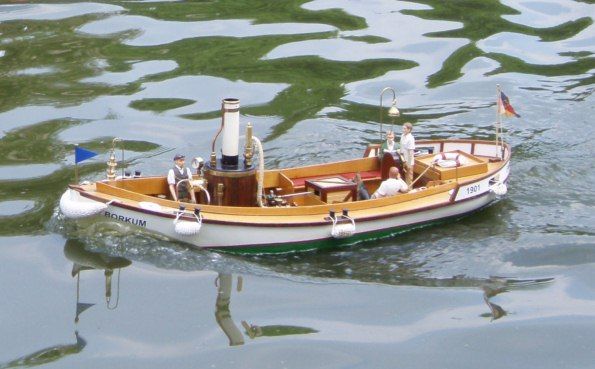
One topic that seems to generate a great deal of diverse opinion when it comes to steam plants, is the effect of the gas tank cooling. There certainly do seem to be some misunderstandings as regards the subject, so it’s probably worth having a look at what goes on and how it affects our plant. So let’s have a look at the theory of what is happening, which might then help us to understand the effects.
Enjoy more Model Boats Magazine reading in the monthly magazine.
Click here to subscribe & save.
The theory
Liquefied gases in a pressure vessel or tank contain the liquid and in the space above the liquid level, gas at its saturated vapour pressure. This is in a state of equilibrium and will only change with the addition or removal of energy. When the enclosed tank is opened to atmosphere by opening the outlet valve the pressure in the tank falls so more liquid can now evaporate to create gas and increase the pressure again to restore the equilibrium. The theory is that the molecules of liquid that have a slightly higher level of energy will be the ones that escape from the liquid state and become gas so the average energy per volume of liquid will actually start to fall. This fall in energy level manifests itself as a reduction in temperature so the liquid starts to cool down. If the valve is now closed, the liquid will continue to evaporate until the saturation vapour pressure is reached again, at which point liquid will stop evaporating. However now the temperature of the liquid has fallen, cooling down the tank and the gas in the process, so the saturation vapour pressure has fallen as well with the lower temperature.
Consequently although the tank is in equilibrium again, the pressure of the gas is now lower. In time the tank will absorb heat from its surroundings until once again it reaches ambient temperature, and thus the temperature of the tank, and the gas will follow suit restoring the gas pressure, but this of course takes time. If we therefore continuously vent off the gas from the tank the liquid will cool, the gas will cool and the pressure will fall. This cooling effect is probably at its most obvious when we use portable gas bottles for camping or even in remote areas where piped gas is not available. The gas bottles will develop, first a condensation and then a frost as the temperature of the liquid drops significantly.
So the bottom line is this; as we use the gas in the tank the pressure will drop. That’s a fact and according to Scotty, ‘We cannae’ change the laws of physics Cap’n’, so I guess we are stuck with it. Our options are to either reduce the effect or try to deal with it in some way so let’s start off by having a look at reducing it.
The first pair of diagrams shows:
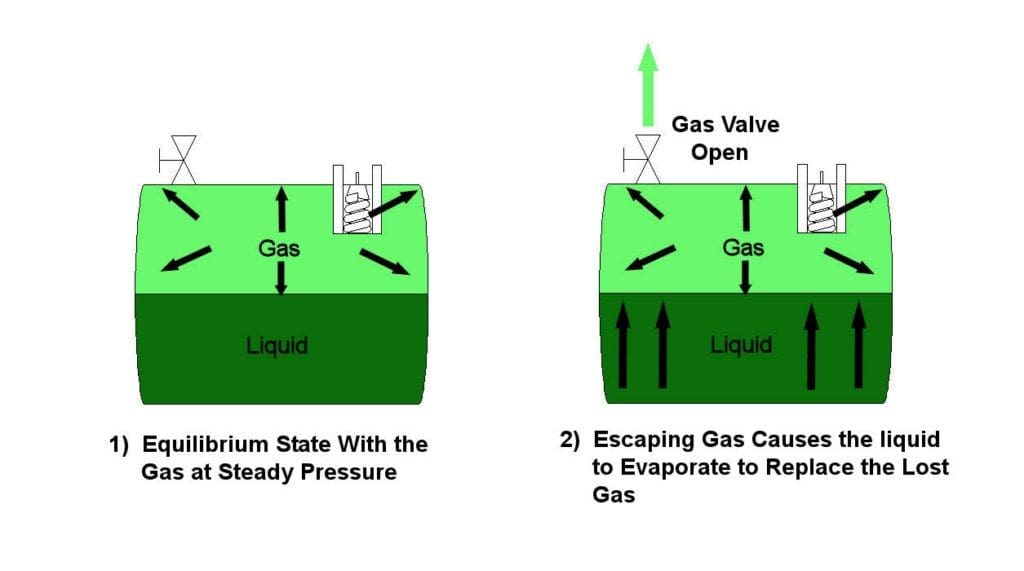
1: A gas tank containing a liquid and its gas in a state of equilibrium at ambient temperature and the gasses saturation vapour pressure.
2: The gas valve has been opened so gas is now escaping. This causes the saturation vapour pressure to fall so the liquid will start to evaporate to replace the lost gas and maintain the pressure.
The second pair of diagrams shows:
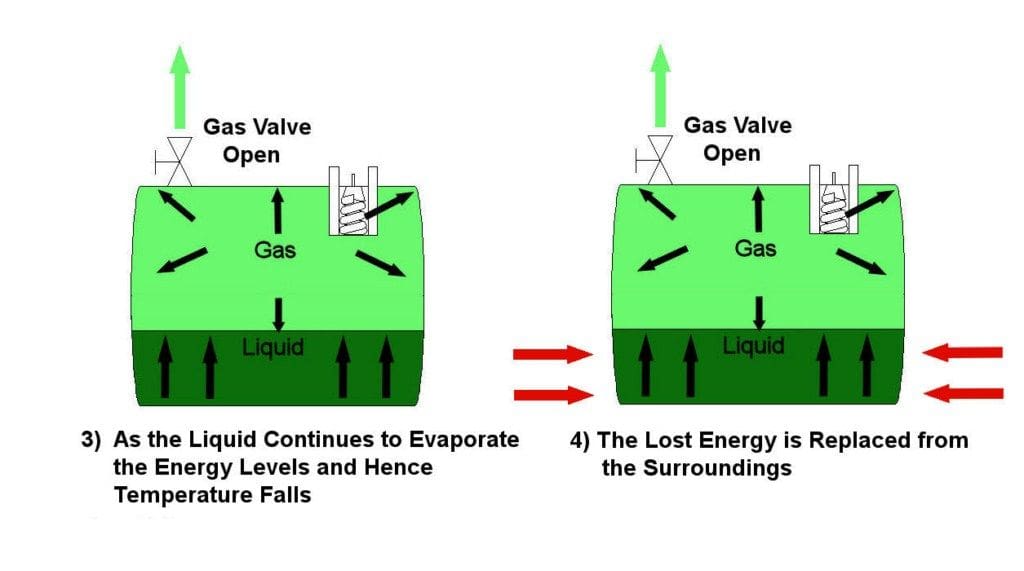
3: The liquid level falling as the liquid continues to evaporate to replace the lost gas. It is accepted that the liquid molecules of a higher energy level are the first ones to evaporate and hence the aggregate energy level of the remaining liquid falls, causing the temperature to fall.
4: The liquid absorbs more heat energy from the surroundings to replace the lost energy. If the gas escapes quickly the temperature of the liquid will fall faster than it can be replaced from the surroundings
Solutions
First of all, some plants may be so designed that the rate of use of the gas doesn’t have a noticeable effect on the gas pressure before it’s actually been all used up. Many small installations never actually notice the effect because the performance of the plant simply doesn’t require huge amounts of gas so there is nothing really to worry about. A number of steam modellers though will notice a loss of performance when they use the model hard for prolonged periods of time and simply put the loss of performance down to using the steam in the boiler. What will eventually happen though is that the boiler will recover its pressure more and more slowly as the flame deteriorates due to the reduced pressure and so you find you have to wait longer for the pressure to come back up. Eventually the burner will start to struggle to actually increase and then even maintain the boiler pressure and the model can actually slow down quite significantly. Obviously then one way of dealing with it is not to try to chase the fast electric lads around the pond and remember that it is a steam model and use it slowly and intermittently. If it is a very basic set up with no control then you want to prevent the safety valve from lifting so use the model just enough to keep the pressure down so you are using the minimum amount of gas and thereby reducing the cooling effect.
Another useful way of reducing the cooling effect is to use an alternative gas tank to raise the initial pressure of the boiler. If you use disposable gas canisters, then use a spare one for raising steam pressure and then change over to another tank before putting the model on the water. All the initial cooling effect is then taken up by your spare tank and the model starts off on the pond with a normal temperature tank. If you have a manufactured tank it is still possible to raise steam pressure from a disposable tank on the pond side then change over to the on board tank to run the model with just the same benefits.
A final thought on operational considerations, again thinking of gas consumption, is not to have your boiler running at an unnecessarily high pressure. Most oscillators will run quite happily at around 30psi, so having a boiler at a much higher pressure than that is wasting gas as well as getting closer to your working pressure and running the risk of your safety valve lifting, which is then a huge waste of gas and something you want to avoid at all costs.
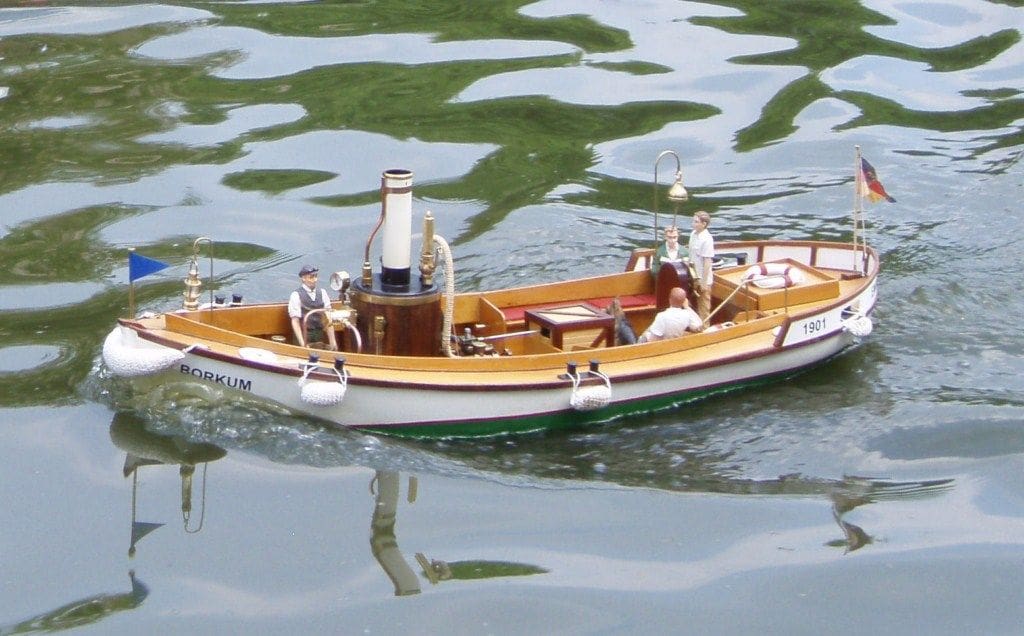
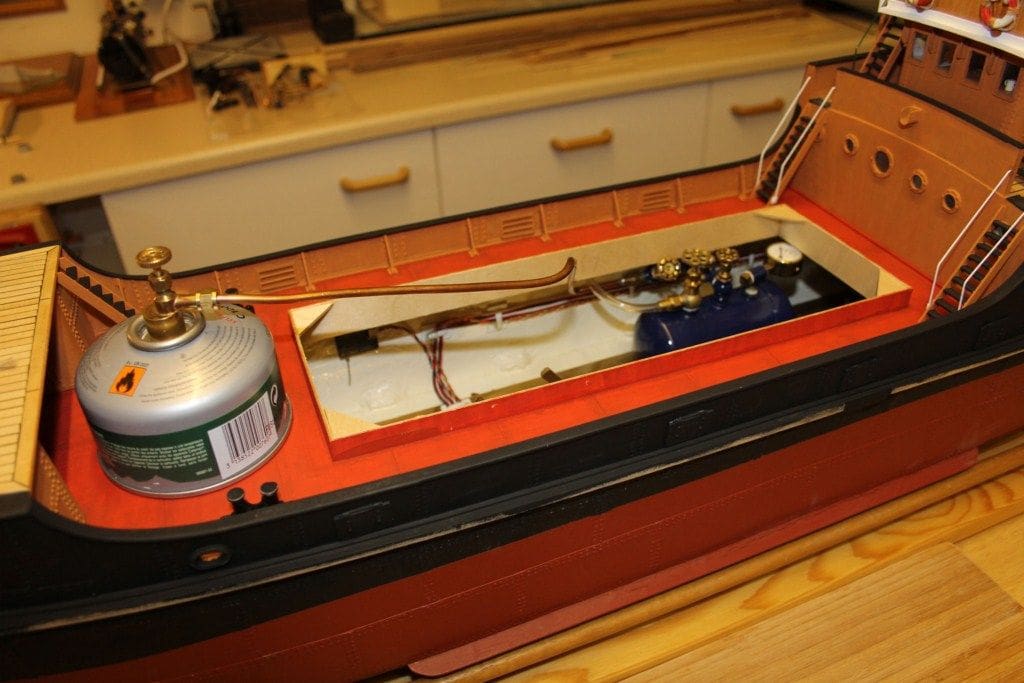
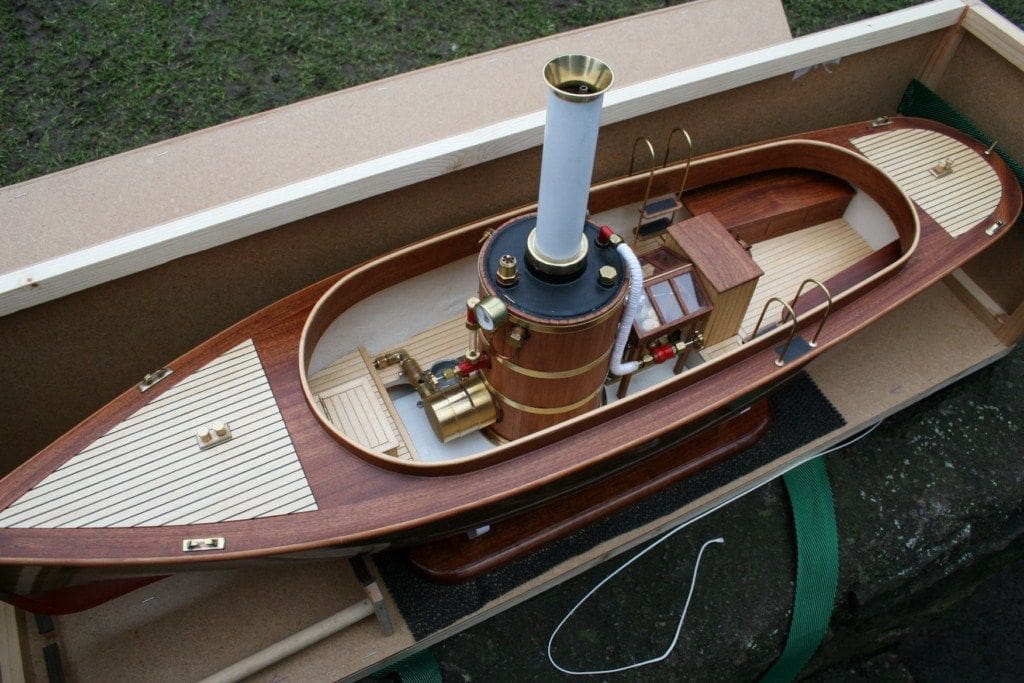
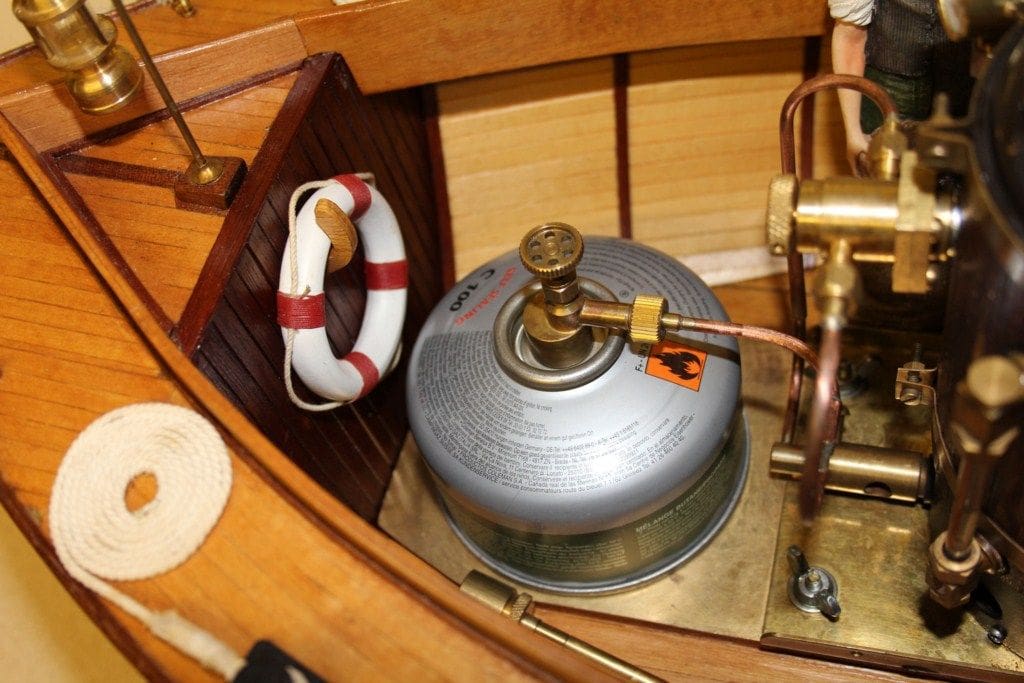
Conclusion
So there in a nutshell is the cause of the gas cooling effect and how you can try to reduce the effect simply with your operational procedures. Next month we will look at how you can design your plant in the first place to significantly minimize these effects as well as one or two useful additions you could make to your model if you are experiencing problems.




